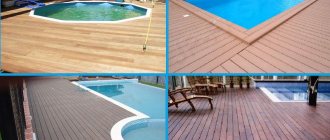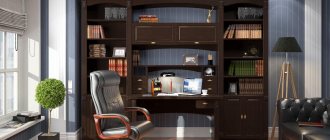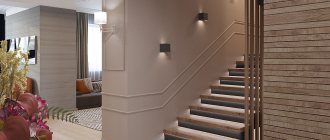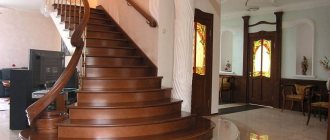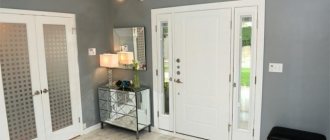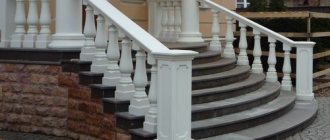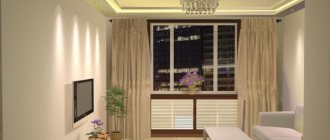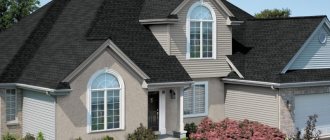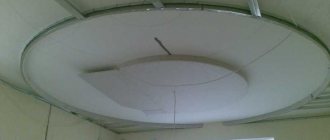How to organize staircase lighting
Before thinking about lighting the staircase to the second floor in a private house, do not forget that first of all it should be comfortable. It doesn’t matter what you choose - chandeliers, sconces or ribbon. The main thing is that each step is well lit. Otherwise, the stairs pose a great danger, especially in a house where there are children.
To avoid overpaying for electricity, install motion sensors. It is very comfortable. As soon as someone approaches the steps, the light comes on, and when no one is there, the lights go out on their own. If there is such a sensor, then you do not need to look for the switch every time.
Staircase lighting may vary. The easiest option is to attach lighting sources to the ceiling and walls. And to make the interior more comfortable, you can also illuminate the steps. In the photos of interiors of different styles you can see that steps look more interesting if several sources are used to illuminate them. It can be:
- ceiling chandelier;
- sconce;
- Spotlights;
- LED Strip Light;
- designer lighting.
Don't be afraid to experiment and make mistakes. It is better if the steps to the second floor are illuminated with lamps and lamps located at different heights. And if after the renovation you feel that there is too little light on the flight of stairs, place a compact floor lamp in the corner. Even a forged street lamp can fit into an Italian interior.
Backlight rules
When designing a staircase you should consider:
- The lighting should be dim so as not to dazzle the eyes or create shadows when ascending or descending.
- Lamps should be placed at the same distance along the passage so that all steps are visible at once.
The general appearance of the staircase should correspond to the stylistic design of the entire room. Numerous photos of staircase lighting on our website will help you make this choice.
Ceiling chandelier
Do you have high ceilings at home? The right interior solution would be to choose a chandelier for the staircase in the house. If there are many steps, a cascading lamp will do. Note that today this is not the most popular lighting option. But if it seems most suitable to you, choose a chandelier that will match the style of the rest of the interior. For example, if you have a classic design and a wrought iron staircase, then the lamps can also be wrought iron. For a loft-style room, a wooden lamp with metal elements is suitable.
If the chandelier will be the only lighting fixture, choose a large one with bright lamps. It is desirable that it illuminates every corner. There should be switches at the bottom and at the top - their location is thought out at the early stages of repair.
Features of lighting of external stairs
If changes in temperature, humidity and other atmospheric influences are not particularly important for organizing the lighting of internal staircases, then external structures have their own characteristics.
- The power of outdoor light sources should be greater than that of indoor lamps.
- In the case of using general lanterns to illuminate the courtyard and stairs, their location should provide enough light for the entire system.
- Only lighting fixtures specifically designed for outdoor installation should be used. Lamps for lighting the stairs in them must be protected from atmospheric influences, that is, covered with shades.
- Electrical wiring is used with reinforced insulation that can withstand temperature changes and precipitation.
Original options
Lamps can be located:
- On the walls of the house;
- On the fence;
- Suspended from cables;
- Installed on poles.
Low columnar lighting structures are often used.
https://youtube.com/watch?v=CMlPUekL1S8
Wall sconces
Wall sconces are suitable for lighting the steps to the second floor in a private house. They are made in different styles: classic, Scandinavian, modern, minimalism, Provence. This lighting option is suitable for long staircases to the second floor, because the sconce illuminates a large area. One such lamp will be enough for a small house in the country, and 3-5 for a huge one. They are placed at a distance of 1-1.5 m and closed in one circuit.
The location of the lamps is thought out at the early stages of repair, and wiring is done for them. But if you decide to place the sconces after you have painted the walls, then use decorative cable ducts to hide the unsightly wires.
Types of lighting fixtures and their installation location
Examples of using sconces to illuminate stairs
The following types of lighting fixtures are used to illuminate the stairs:
- sconces - wall lamps;
- ceiling chandeliers that are mounted in the skylight of the stairs;
- LED lamps or strips are placed under the railings, under the steps, in a special box on the wall along the stairs;
- spotlights - can be mounted on the walls below or directly into the surface of the steps.
Most often, a combined system is used, where several types of devices are involved. It is convenient and economical in terms of electricity consumption. However, some devices can be connected to an autonomous power supply system.
Spot directional lighting
You can highlight the stairs to the second floor using spotlights. They are small, give less light, so for the same room you need more of them than sconces.
Such lighting fixtures can be mounted in the ceiling, walls, doorways and steps. Make some switches. So, one of them will light the ceiling lamps, and the other will light the stairs. If decorative niches are made along the steps, spotlights are also installed in them. The recess can be built to look like a window (this will make the home interior even more comfortable).
The idea of spot wall lighting remains popular. If you want to implement it in your interior, it is recommended to decorate the walls with plasterboard. You can easily cut the required number of holes of any diameter in it. This is much more difficult to do in a brick or concrete wall.
Necessary materials
To make automatic lighting for the stairs yourself, you need lighting for each step of the stairs, calculating the distance from the edge to five centimeters.
Traffic metering devices can be installed at the top and bottom positions. The lighting control function will be performed by a specific device.
A device for adjusting the lighting should be installed. The general parameters of the tape must be as follows: there must be at least 60 diodes per meter of product, their dimensions are 3.5 * 2.8 mm, the Ingress Protection Rating must be at least 67.You can use other options and materials for lighting stairs. We looked at the most popular option.
Insulated dielectric screwdrivers up to 1000V - tips on how to choose the best manufacturer- Dielectric insulated tool for work - which one is better to choose? Review of manufacturers, photos + video
- How to make an antenna for FM radio with your own hands - simple instructions for making a homemade antenna with photos and descriptions
LED Strip Light
This lighting option is now actively used in a wide variety of interiors. It is well suited for small rooms, narrow stairs, rooms with low ceilings. An LED strip does not require as much space as a sconce, chandelier or floor lamp, but it provides no less light.
The tape is sold by the meter, so before going to the store, decide where and how it will be placed. It is very easy to install - many types have an adhesive backing.
To achieve uniform illumination of the corridor, the tape can be placed in several places. It is usually glued under steps and handrails. If there is no sconce on the walls, a structure is attached to it, which is also glued. If there are niches or paintings, they can also be additionally illuminated. The tape is very flexible, so it is actively used in the design of various interiors. The drawings on the walls lined with LED tubes look unusual. Install a motion sensor, then the light will turn on automatically.
Spiral staircase
As already mentioned, a spiral staircase in a private house takes up the least amount of space. But it has a serious drawback: it is uncomfortable to walk on, and it is almost impossible to lift anything bulky to the second floor. So they are not very popular, although they look good and fit well into any interior.
Calculation features
When designing a spiral staircase, it must be taken into account that in some positions there are other steps above your head. Therefore, it will not be possible to make small risers
The next feature is that the steps are all unequal in width - narrower on one side, wider on the other. The narrow part is attached to the central support (post), the wide part is attached to the walls or balusters. The standard for the width of the tread is measured in the middle part, and the wide part should not be more than 40 cm.
The span width is from 50 cm to 100 cm. The entire structure is doubled - a square with a side of 100 cm to 200 cm is required.
Prefabricated column design
This type of spiral staircase is the easiest to make: a pipe is placed on which wooden elements are placed - steps, intermediate cylinders, etc.
The device of a spiral staircase on the central pillar
If you look in more detail, in addition to a metal pipe (in this case with a diameter of 40 mm), steps and balusters (available in any design), there are turned wooden cylinders (segments) that set the distance from one step to another.
Elements of a spiral wooden staircase
On the other hand, the distance between the steps is maintained using cuts on the balusters. The steps are attached to these grooves (with glue + fasteners).
The same device, but in metal
Do-it-yourself installation of a staircase to the second floor begins with the installation of a pillar. A hole equal to the diameter of the pillar is made in the floor of the first floor and the ceiling of the second. We insert the pipe into the hole, put on the enlarged washer, and tighten the nut. Further assembly is simple: the corresponding elements are mounted on the rod, and in parallel with the installation of the step, a baluster is placed and secured. The dimensions of the steps for this spiral staircase with the given parameters are in the drawing.
Drawing of elements of a spiral staircase with dimensions
The steps are cut from laminated boards or furniture boards. You can use solid wood, but of furniture quality, that is, without any defects and dried, with a humidity of no more than 8-12%. Although laminated wood is considered more reliable: it will definitely not be damaged and will not crack when dried.
For an example of assembling such a design, see the video. It has a prefabricated pole, but you can also use a solid one, although assembling the steps will be inconvenient - you will have to climb the stairs every time.
The design of a metal spiral staircase is presented in the following video fragment. For those who are familiar with welding, this option will be easier.
Spiral staircase to the second floor: photos of interesting options
Spiral staircases can have a futuristic look. Such models fit well into the styles of minimalism, hi-tech and other modern trends in interior design. With or without railings - the choice is yours
In the photo on the right, a wooden spiral staircase on a curved stringer is a difficult element to execute. The original shape of the steps in the form of a semicircle is very comfortable when walking. Forged twisted staircases are a classic of the genre. With the same design, the impression may be different. Color design is also important.
Designer lighting
Designers consider using only one type of lighting too boring, so they often create unusual combinations. Thus, classic interiors are simultaneously illuminated by sconces and chandeliers. You can find forged models and the same lamps with beautiful lampshades.
Spot lighting for stairs is rarely used independently. In such an interior there may be sconces in a modern style or ceiling lamps. You can combine LED strip, sconces and floor lamps in one room. There are no restrictions or requirements if everything fits into the overall design concept. The main thing is that the light sources are in the same style, combined with the decoration, stairs and decorative items.
DIY automatic LED backlight installation
Illumination of staircase steps with LED strip is a stylish and effective lighting solution for this structure. For LED lighting you will need a pair of power supplies. Using one, voltage conversion occurs, the other is necessary for integrating the circuit into a household network.
Making your own backlight from LEDs is quite simple for any beginner who is encountering such equipment for the first time. When purchasing components, the buyer is given instructions that describe all the conditions and connection sequence.
If there are protrusions on the steps, the adhesive base of the tube will be sufficient for fastening, but if this element is missing, you will have to use an installation profile.
Materials and tools
To install staircase lighting using an LED tube, you will need the following tools and materials:
- controllers,
- Power supplies,
- LED strip,
- profile for installing tape,
- clamps,
- screwdriver,
- screws,
- hammer drill.
Methods of lighting stairs
The staircase to the second floor becomes an important element of the interior of the entire house (even the semantic center). Therefore, its lighting should be thought out as much as possible. With the help of light, you can highlight zones and emphasize them.
During preparatory repair work, immediately determine how the lighting will turn on: automatically or manually. If you choose the first option, you will need to install motion sensors. If the second one suits you, then you will need to install switches in several places.
Where to start making a staircase with lighting
Take a sheet of paper and write down your “wants” for lighting on it. For example, you liked a photo from the Internet or a video showing illuminated stairs. You take them as a basis and customize them to suit your needs. Let's say you want to:
- The steps lit up when you stepped on them.
- The illumination of the steps turned on step by step, as one descended or ascended the stairs.
- The entire staircase was illuminated at once.
- The backlight was turned on by a key on the wall or automatically by a motion sensor.
- The backlight worked constantly or turned on only at night.
- The backlight flickered, burned in one color, or shimmered in several color shades.
There are many scenarios. You need to choose yours. Assess your strengths and capabilities and only then proceed with the installation of the staircase lighting system.
Automatic backlight
Its installation will save you from having to manually turn on the light. To turn the backlight on automatically, you can set:
- Motion Sensor;
- timer;
- sound device;
- load sensor
The first one will be triggered when someone approaches the stairs. The timer can be set for the period of time during which you are at home. But this is not always convenient. If you install a sound sensor, the light will light up when you clap your hands or when talking. The load sensor is triggered when you place your feet on a step or touch the railing.
When choosing a backlight, remember that any automation can malfunction and one day not work. In this case, you should know how to turn off all sensors and where the regular switch is located in the house.
Automatic system
A very practical and convenient function is automatic control of the lighting on the stairs. Depending on the operating mode, such a system operates according to the following parameters:
- movement. The sensor is triggered when a person moves in a certain area, after 20-25 seconds the light goes out.
- load. By touching the steps or leaning on the railing, you turn on the lights along your path.
- time interval. The operation of lighting devices begins and ends at strictly established times of the day.
- sound. No need to look for a switch, just make some sound (voice, clap, knock) and the light will be turned on in your path.
All these sensors can be combined in various ways and this will significantly save on energy consumption.
Arrangement of wireless and conventional network lighting
Today, wireless lighting is used to illuminate stairs. It is safe and very comfortable. This system consists of an autonomous power supply, lighting fixtures and motion sensors.
This design can work even if there is a power outage in the house. It turns on in the dark. To install the devices, you do not need to drill the walls and ceiling. Even a person without special training can handle their installation. The system is safe: it cannot overheat, and the possibility of a short circuit is eliminated.
Compared to wireless, network has its disadvantages. To do this, you need to plan the location of the switches in advance and route the wires under them. It is expensive and the work can only be done by specialists. If there is a power outage, the network backlight will not work. There is also a risk of short circuits and overheating. If a wire in the wall is accidentally drilled or a nail is driven into it, the entire wiring will fail, and in order to repair it, everything will have to be redone again. Experts recommend that owners of new houses install wireless wiring - it’s easier and safer.
Installation options and preparatory work
Everything written above can be summed up: usually lighting fixtures are located on the side wall or built into steps (railings). The installation of LED devices will be discussed below.
Required materials and tools
To complete the lighting installation work you will need:
- LED light sources;
- Power supplies;
- wires;
- profile for laying cables (if wall grooves are not used);
- fasteners;
- electric drill (as a last resort, a screwdriver);
- yardstick;
- knife or scissors.
LED Source Selection
If the devices will be fixed on the walls, then you can use compact LED lamps installed every two or three steps. To save space and reduce energy consumption, use miniature, super-bright diodes installed in the lid of the box in which the wiring is hidden.
When installing lighting on steps, an LED strip is suitable, which can be monochrome or multi-colored (RGB).
Step-by-step installation instructions:
- Make markings to simplify the installation of lighting fixtures. You need to decide where the profile for laying the cable will be attached, where to install power supplies, controls and lamps.
- Create mounting points using a drill or screwdriver. In other words, make holes that will be used to fasten structural elements.
- Secure the profile for the cable and LED strip, soldering the power wires in advance.
- In the case of mounting LED bulbs on a side wall, the supporting structure can be used as a substrate.
- There is usually an adhesive compound on the back of the LED strip. Use it to attach to the steps along the top edge. Flights of stairs can be illuminated with a sealed board protected from moisture.
- Before installing the wiring, you need to select a control option. This can be constant lighting or smart lighting.
Continuous operation
The main advantage of this method is ease of installation with minimal financial and time costs. At night, you manually turn on the lighting, which will work until the morning. Disadvantages include significant energy consumption and reduced service life of LEDs.
Intelligent control circuits
This approach is used in complex “smart home” projects. Control units operating using a microcontroller independently decide when to turn on the staircase lighting. One such unit can serve the entire house. An Arduino board is suitable for these purposes, and creating it yourself is extremely problematic. The light can turn on at nightfall or when moving up the stairs (motion sensor).
The final choice in favor of one or another method of lighting the stairs is yours. To install and connect the selected lighting device, it is enough to have basic knowledge and skills in electrical engineering. The required level of illumination of the stairs will ensure safety during its operation. Properly selected lamps will make the structure an indispensable part of the overall interior. Combined lighting will allow you to create unique systems, the design of which is limited only by your imagination.
Types of lamps for lighting stairs
To illuminate the stairs to the second floor in a private house, you can use:
- LED bulbs;
- LED tubes;
- Spotlights;
- sconce;
- chandeliers.
Lighting fixtures can contain lamps that emit cold or warm light. Which one to choose depends on personal preferences and interior style. So, the tape consists of a thin metal sheet on which LEDs are attached. Or they are located inside the tube. Tapes and tubes come in different colors, so they are suitable for any room. They emit warm, diffused light and make any interior more comfortable and truly homely. Such tubes can be placed along the stairs, and the border of each step can be marked with tape.
There are different types of sconces. In classic interiors they use the simplest ones, which are attached to the wall. Less popular are built-in ones. To install them, you need to drill a hole in the partition. Sconces with a bracket are suitable for loft, minimalism and other modern styles. With its help, you can adjust how far the lampshade will be from the wall.
Spot devices scatter light evenly and last a long time. But they heat up quickly, so when installing, you need to make sure that they do not come into contact with carpeting or wooden objects.
Types of stairs and optimal lighting for them
Staircases in a private house can differ from each other, so the methods of lighting them are selected according to their type. Interfloor transitions can be divided into several varieties, both according to the material of their manufacture and the design features.
To begin with, it is worth considering the differences in the materials of manufacture, from which stairs are most often built today.
Wooden staircase with built-in step lighting
- Stone and wood have been considered the main materials for the construction of staircase structures for many centuries. Traditional for Russian architecture is, of course, natural wood, which had practically no “competitors” and was used for the construction of both internal and external staircases. From time immemorial, the stone has been used for this purpose in European countries. From here, in principle, interior and exterior architectural styles were determined.
Nowadays, stone “in its pure form” is rarely used. It is mainly used only for cladding concrete and brick stairs. Wood has not lost its ground at all - structures are made entirely from it, or they are also used for cladding steps made of other materials.
Wooden stairs are perfect not only for Russian classics and eco-style, but also for houses built and decorated in such directions as “chalet”, “ethnic”, “country” and others like them.
When choosing a staircase made of wood for construction in a house, which is planned to be equipped with lighting, it is necessary to take into account that the material belongs to the highly flammable group - G4, therefore the electrical wiring supplying power to the lighting fixtures must be well insulated. In addition, for stairs made of this material, it is necessary to select lamps with lamps that do not heat up too much, and it is best to use low-current systems. For example, to illuminate wooden structures, you should not use the usual incandescent lamps, even of low power, since they are unsafe precisely due to high-temperature heating.
Wood used to make illuminated stairs must be treated with fire-retardant solutions, which make the material more resistant to high temperatures, which significantly reduces the likelihood of fire due to overheating.
- Metal, plastic, glass and other materials.
All-metal stairs also have a “rich history”, however, recently they have not been particularly popular. This is due to a number of reasons, which include, among other things, the heavy weight of the structure, the high cost of the material and work of the craftsman, and not very good indicators in terms of operational safety - for example, purely metal steps can be quite slippery or dangerous.
A very original staircase - a combination of metal and glass with spectacular lighting of the steps from below
Therefore, metal is most often combined with other materials, making a frame from it, onto which wooden, glass or plastic steps are fixed. These staircase options are great for modern minimalist styles, such as hi-tech, techno, loft and others.
Prices for lighting for stairs
step lighting
A flight of stairs with a railing made of forged metal parts. Wall lamps like sconces are more suitable for this classic style.
It is impossible not to mention the stairs, the construction of which uses metal parts made using forging technology. Such transitions can be used in classic interior design styles. And for illuminating the marches in such “ensembles,” the most appropriate are outdoor lamps, such as chandeliers or wall sconces.
Speaking about combined structures, it is also necessary to remember the flammability of some materials, for example, some types of plastic, which, when heated, can not only melt, but also emit toxic fumes.
Metal is a good conductor of electricity, so all cabling hidden in metal structural elements must be enclosed in additional special flexible insulation.
Now let's move on to a brief consideration of the types of stairs according to their design.
A flight of stairs is perhaps the most convenient for frequent use
- Marching stairs . This type of staircase can be called the simplest to construct, which is why they are most often chosen for installation in a private home, of course, if the space allows. Depending on the height of the building and the number of floors, the staircase may have one flight or several. Such designs are the most comfortable to use, and a variety of types of lighting are suitable for them.
- Spiral staircases . If the area of the room is not large enough for a full-fledged marching structure, then a spiral staircase is often installed to climb to the second floor or to the attic. This design is the most compact, and if desired, it can fit into an area of only 1.2÷1.5 square meters. m.
The steps of a spiral staircase are fixed to the rack in a spiral manner, according to the principle of a screw thread - hence its name.
This type of structure has many significant drawbacks, but equipping its lighting is much easier than any other. Lighting fixtures can be mounted on its central axial post or along the walls of the thickness of the attic floor and directed downward. Therefore, the lighting of a spiral staircase can be fully organized even after it is built, without at all violating the integrity of its parts.
An excellent solution for modern interior styles - the staircase on the rails does not seem to “steal” the space in the room at all
- Staircase on rails . This type of staircase design looks “weightless”, as if “floating in the air”. Its steps are fixed at two points: on the one hand - on the wall, and on the other - on rails, that is, peculiar racks standing between the steps.
Such staircases do not have steps, which makes them “transparent”, leaving maximum natural light in the room. This quality is especially important for modern minimalist styles, where the priority is always to preserve as much free space as possible.
The steps of this type of staircase are made of any material the owner desires, but the frame on which they are supported is usually made of metal. Lighting devices of a similar design can be installed under its steps, built into them, or placed on the wall.
There are other types of stairs that combine elements of the varieties described above. For example, an interfloor passage consisting of two flights may have (instead of a platform between them) winder steps made according to the principle of a screw design.
Combining a flight of stairs with a “spiral” section of winder steps
The type of staircase is usually determined by the area of the house and the space that can be allocated for its installation, as well as the style of the interior.
Illuminated staircase design
Lamps should fit into the overall design of the staircase and become its decoration. Their choice depends on the style of the interior. If you like classics, then wrought-iron sconces will suit you, each of which has two lampshades, plain or with a floral print. Such devices are placed between paintings in gold frames. If there is a lot of wood in the interior, look for lamps with wooden lampshades.
Square spotlights will fit into a Scandinavian interior. They can be built into steps or installed along the stairs. They are also suitable for loft and minimalism style. For the latter, select square light sources in steel frames. If several light sources are used, they should all be in the same style and complement each other.
In order for the stairs in a private house to be not only functional, but also stylish, you need to choose the right lighting for it. The interior will become cozy if you combine sconces, chandeliers, floor lamps, spotlights and other light sources in one interior.
Step lighting
Local lighting of interfloor passages in a private house is becoming increasingly popular. For this purpose, recessed staircase lamps, diode or neon strips are used.
There are 2 most popular ways to install spotlights on steps: 1 lamp in the middle or 2 at the edges. The second option is more popular, although one device is enough for uniform lighting. Small lamps can be built into the riser, then the underlying step will be illuminated. This is very convenient when moving at night, reducing the risk of tripping and falling.
The illumination of steps using elastic tubes filled with neon or strips with LEDs looks very original and futuristic. The luminous strip is fixed to the surface using double-sided tape. It emits very bright light, so it is recommended to install it in an aluminum profile.
If you attach the tape to the niche of the steps, you can create a unique floating effect. The light source is covered with frosted glass or acrylic plates, then the brightness of the light decreases, and the feeling appears that the staircase is floating in the air. To achieve the same effect, luminous ribbons are fixed in the niches of the railing.
To illuminate steps in a private home, it is recommended to use lighting devices with a high level of dust and moisture protection.
